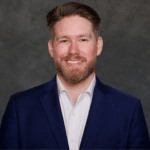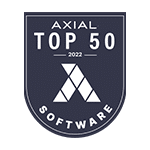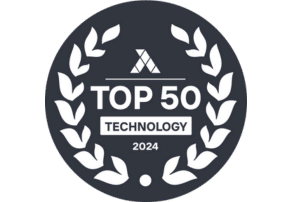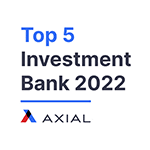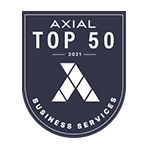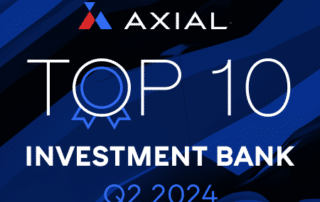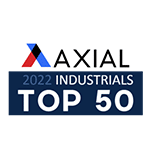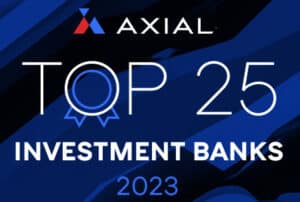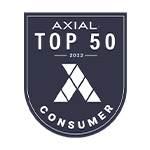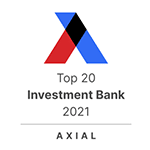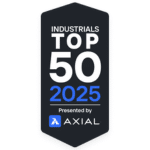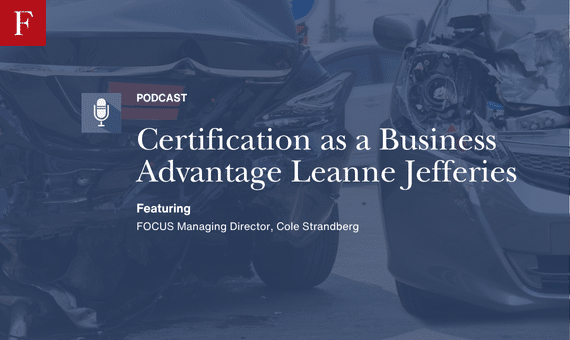
Certification as a Business Advantage Leanne Jefferies | Evolution of OEM Certifications
On this week’s episode, Cole Strandberg chats with Leanne Jefferies, Vice President of Strategic Accounts at OEC. Leanne has been on the front lines of OEM certification for years and brings a unique perspective on how shops can not only achieve certification—but truly leverage it as a strategic business advantage. They discuss how certifications have expanded from luxury-only to mainstream, how they’re adapting for the EV era, what the investment and ROI really look like, and how certified shops can better serve consumers, insurers, and their own teams.
Listen and Follow The Collision Vision.
Cole Strandberg: The pleasure is mine. Looking forward to an awesome conversation. I don’t play favorites, so I can’t say this is my favorite series we’ve ever done, but the OEM conversation I think is super important, super timely, incredibly actionable for our Body Shop business owners and leaders. I think it’s an awesome conversation. We’ll dive in here. I do want to set the stage a little bit and talk about where we’ve been historically in the realm of OE. So, so let’s start at the beginning together, if you would. What did kind of the the genesis of the whole OE certification world look like? And how like which OE Ms. kind of started us leading the way there?
Leanne Jefferies: Sure. Yeah, It’s interesting when you start to look back, you know, 15 years ago, OEM certification, it wasn’t really a thing. It was really in the early 2000s that we started to see certification programs pop up and that was really the luxury brands that that first introduced certification. And really the main reason is because at that time, those vehicles had a lot of advanced technology, advanced materials, a lot, you know, safety systems and different things that were not really like in all of the mainstream vehicles. And I think the concern from the OEM side was that they wanted to make sure that there was a network of shops that had the specific training and tooling required to be able to return those vehicles back to the right condition to OEM specs after a collision. So they were really the the leader there and those programs, you know, obviously the luxury brands have a smaller car park. So they were small networks that started to develop and of course they’ve continued to develop over time. But yeah, that sort of early days was focused on the luxury brands.
Cole Strandberg: Makes total sense. And I think even today when we talk about OE centric body shops, the mind immediately does go toward some of those higher line luxury brands And now obviously that’s expanded beyond into domestic and less luxury brands. I would imagine a lot of that has to do with the fact that those advanced materials and advanced technologies that you referenced have gone mainstream. But talk to me about, in your mind, what drove expansion of these certification programs beyond those luxury brands?
Leanne Jefferies: Sure, definitely. You hit the nail on the head there. So cars have evolved, technology has evolved, the cost of that technology has decreased, consumer expectations have increased. You know, OEMs have really evolved. The vehicles that they’re making, whether it’s sort of an entry level vehicle or a higher end vehicle, they all have the same technology. They’re all utilizing, you know, the aluminum, high strength steel and different mixed materials. You know, if you look at lighting, you know, and you know, ADAP pass all of those different features, some of it’s driven by I guess attracting customers and you know, customers want all the bells and whistles on their vehicles. And also some has been driven by, you know, government legislation where we’re required to have certain, you know, safety features on all vehicles. So as that’s changed over time, over the last 10 years especially, we’ve seen a huge increase in the number of OEM certified programs. And I don’t know that there’s a manufacturer out there today that doesn’t have some sort of, you know, certification for collision repair facilities to make sure that they have a network of shops that can properly repair their vehicles.
Cole Strandberg: You mentioned the word change, and I have a feeling that’s a word that’s going to be talked about a fair bit throughout our conversation. This is an industry that has changed so dramatically over the last decade, over the last five years even shorter as well. From your perspective, how has that increased vehicle complexity changed what it means to repair vehicles correctly or to repair them to meet these OE standards?
Leanne Jefferies: Yes, definitely change is is the word of the day and and I don’t, I agree that’s not going to change in the in the future. Change will continue. But definitely vehicles have become more difficult to repair. A lot more repair considerations have to be taken into account when when looking at doing repairs. OEM repair procedures have evolved as well. And of course, the knowledge that we have to look at those repair procedures for each and every vehicle that we are fixing, that too is has become, you know, understood and part of like everyday life, I guess, for collision repairs. So yeah, they’re just, you know, the, I listened to some of the OEM presentations over the last, especially over the last year or two as we’re seeing more and more EVs come out and those tolerances are so small, those vehicles have to be repaired. Exactly back to the way they were manufactured to make sure that the structural integrity is in place and to make sure that that vehicle is safe. So definitely the way we repair vehicles today is completely different than. And I think back I used to own a shop back in the day, back in 1996 is when I, when I entered the industry, owning a shop and certainly the vehicles were different than it was there. There wasn’t the preciseness required to the extent it is today to make sure that vehicles are repaired correctly and the consumers stay safe.
Cole Strandberg: The level of precision required to repair some of these vehicles with these technological innovations sort of scares me, and I think it’s going to scare a lot of us because of that. It’s so specific to repair a vehicle properly. Now, how are these certification programs adapting and and more importantly, helping shops to adapt with things like EVs and ADOS calibration?
Leanne Jefferies: Yeah, I mean, certification programs are the nice thing is it makes it very clear what’s needed to properly repair a car. So you know, what tools, what equipment, what training is needed and the investments required to be able to qualify to become certified. Those requirements are, you know, not pulled out of thin air. Those are the things needed if you if you reference repair procedures, those are the things needed to fix the car properly. And with EVs coming in especially, there’s different considerations. We’ve always had EVs. If you you know how, how long has, you know Toyota or other manufacturers had EVs in the market a long time. We’ve had hybrids, but it’s the number of vehicles that are EVs and the increasing size of that car park. There are certain things that needs to be considered. There’s safety considerations. After a collision. The last thing you want is to, you know, have the wrong thing happen and either have people or your building, you know, impacted negatively after a vehicle like a thermal event could occur. So I, I’m, I’m far from the most technical person, but what I do know is that like, for example, one of the things that we have introduced at OEC is called EVHQ, which is the Electric Vehicle Handling Qualified program. And this is not how you fix the car. That’s not what the program is about. It’s, it’s about providing the information needed to keep people and building safe. So what are the things that you need to know? What are the things that you need to check? Do you have a safe place to put that vehicle? Do you make sure that your staff knows how to make the right decision if that vehicle should come in your building? So, you know, certification programs have to continue to evolve as there’s more EVs and again, technology continues to evolve too. So that’s the whole point, right, of certification is to make sure you can fix today’s vehicles and then also start preparing and continuing to invest and train so that you can fix the vehicles of tomorrow as well.
Cole Strandberg: Fantastic. You, you are speaking with us now north of the border up in Canada and in our pre show conversation is something that struck me was sort of the difference in mindset and in programs between Canada and the US. Similarly, we recently did a series on sustainability and to hear some different feedback and input on what the collision repair world looks like in Europe. It’s totally different than what it looks like in the US. Talk to me about some of those regional differences between Canada and the US when it comes to adoption and implementation of of some of these OE programs and OE procedures.
Leanne Jefferies: Sure. Well, I mean, we all look the same, US and Canada, but there are some significant differences between the markets. Some of it is driven by, you know, politics and some of it may be by consumers as well. As far as EVs in the US, obviously we’ve seen sort of a a deceleration of the, you know, pushing to have more and more EVs in the market, whereas in Canada that’s not the case at all. We’re full steam ahead with EVs, especially in like the Quebec and the BC markets where there’s really aggressive requirements of OEMs to have a particular number of EVs being sold in those marketplaces. And I think consumers in Canada in general are also very focused on EV and sustainability. So I don’t know if that’s a cultural difference or or just good marketing, but definitely a difference there. The other, you know, major difference between our markets is, is the structure. So in Canada we have a lot of, you know, franchise organizations, whereas in the US it’s, it’s more MSO focused and obviously there’s, you know, 110th of the size in Canada compared to the US as far as the number of shops. But certification has really taken off in Canada. We have about 25% of the shops in our country here certified under OEC certified collision care program. This is a joint effort program with about 13 OEMs participating and there’s a real big focus on certification, not only just because it’s like the right thing to do and to make sure that you can properly repair vehicles, but there’s also been a very big push by insurers to to focus on supporting certification, including, you know, in some cases paying a higher rate and also directing work to certified shops. So we are finding that over time we have a lot of engagement between insurers and certification. So that too is also helping to drive the increased number of shops in our country, in Canada here being certified, although I certainly don’t want to take away from the US because if you just look at the sheer size of the US market, there was a significant number of certified shops in the US as well.
Cole Strandberg: No question. Well, in the case of sustainability, my key take away was as Europe goes, the US is going to follow. Very well may be the case that as Canada goes with OE certifications and those programs the US will follow as well. I know that is a very hot topic here in the USI wanna move on a little bit and and kind of get into the nitty gritty of OE certification programs. Before we do that, I’m gonna apologize in advance ’cause I might mess something up. There are a lot of three letter acronyms here that are gonna be relayed here over the next few minutes. There’s OEC, there’s OEMs, there’s CPN, there’s CRN. I ask that you help me keep it straight ’cause I probably will mess up, but talk to me about what it really takes to become OE certified today. Granted, different programs have different requirements, but from a high level, if you can kind of walk through what shops should expect as they listen and say, hey, I want to make sure we’re repairing vehicles correctly, I want to go the OE route.
Leanne Jefferies: Right. I’d be happy to do that. So OEM certification is really something that has to be embraced by the shop to start with. So it’s a complete mindset change of focusing on tooling, equipment, training, repair procedures and being able to safely and properly repair vehicles. Back to OEM specifications, there is some thought required before you jump into OEM certification to think about, you know, which OEMs do you want to be certified with, which programs is the best fit for your facility. But just to specifically answer your question, how do you, how do you get certified? So #1 you have to make the right decision to enroll in a program #2 you need to look at the investment required. So tools, equipment, and training. Hopefully most of those things are already in your shop because these items, although required for certification, they’re required to be in our business. So you shouldn’t necessarily have to be going out and purchasing all new equipment because these are the things that you should already be investing in overtime, stay up to date and to be able to fix cars properly. But you do need to look at the OEM requirements both for tooling, equipment and training, identify if there’s any gaps and then make a plan for making those investments. Once you have engaged in the program and enrolled, there’s various types of audits or consultations that are completed. But in general, compliance is collected through either online and or in person visits with a auditor, A consultant, again, depending on which program you’re referring to, where they actually come out to the shop, they look at your equipment, they, you know, obviously take photos. And some of those programs also include things like looking at financials, looking at your process, looking at how you’re repairing vehicles, repair planning, There’s all different types of things that the different OEMs have included in their program that’s focused on helping you to improve your business and obviously to improve your bottom line and also to make sure that you’re fixing cars correctly and that you have the best process in place. Generally speaking, once the audit has been been completed and you’ve gone through all of those steps, you would be approved. And then I always like to say that with certification, once you get approved, you’re not done. That’s not the end, that’s actually the beginning. So certification isn’t great. I’m certified. I have a sign on the wall. There’s so much more involved in certification and the things that you can do to promote your business once you are certified. And I know you’re probably going to, I’m going on a long time here, but you can probably tell I’m pretty passionate about, you know, what becomes available to a shop once they are certified. Because it opens a whole new world for helping to build your business, get cars to the door. And then just to change the perception of customers that come to your door and that really are looking for that guidance after they’ve had one of the worst experiences of their lives. And being a certified shop, you have so much more to offer them.
Cole Strandberg: Yeah, congratulations. You’re always certified, you’ve qualified for the race. Now you actually have to get out there and perform and run it and do things the right way. Totally, totally get it. For for folks who are in the midst of building a shop, for example, or re outfitting that shop with equipment, is there any sort of resource that they can look to when they’re kind of evaluating different equipment in terms of what opportunities those qualify them for or provide them for? How should they go about thinking on that subject?
Leanne Jefferies: Well, we at OEC definitely have resources available to shops and we offer those as a no obligation sort of consultation. So we’re always happy. We have an entire direct sales team and customer support team that would be happy to talk with any shop considering certification and to #1 provide them the right information. So what do you actually need to be certified? What’s the tools, equipment, training that’s required? And then secondly, you know, looking at what they have at their facility and helping to identify if it meets those requirements. The other thing is, and this happens a lot, we’ll have shops that are looking to, you know, either moving to a new building or opening a second location. And I always say don’t buy first. Talk to an expert, whether it’s someone always see, see or inside or anyone else that’s involved in certification. The last thing you want to see is somebody waste money and make investments that wouldn’t be applicable to more programs. So if they are focused on OEM certification, it always makes sense to purchase the equipment that’s like at the highest level of what’s required because quite often that equipment could apply to many different certification programs, so. Do your research and don’t be afraid to reach out because there’s people that are willing to help and talk to you. And you know, there’s no pressure one way or another. We just want to help our industry. Be prepared and make good choices, make good fiscal decisions. I’d rather have, you know, somebody buy the right equipment and then, you know, once they’re certified, that extra budget that they didn’t waste could go towards advertising or promoting their shop or rewarding their staff. There’s all kinds of different things that shops can do when when you know, when they’ve made good financial decisions.
Cole Strandberg: Measure twice, cut once, right? And it makes some sense to do the research upfront and got you walk into some amazing facilities out there and sometimes this is unavoidable. But you see the pit full of all 12 different welders. They need all, all whatever redundant equipment that you know, you’d hope, hey, if, if we can be strategic upfront, do our research, know what we need, maybe we can eliminate some of that waste and redundancy. So we’ve, we’ve gone through kind of the idea behind what it takes to become OE certified. When you’re when you’re preparing to actually embark on that journey, how do you go about choosing the right OEM or the right OEMs to align with?
Leanne Jefferies: That’s a great question. It’s not really rocket science honestly. The first thing that I would suggest is take a look at your last two years of sales and find out what are you fixing? Like what are you actually repairing today? The car park in your area can change and evolve over time, but it certainly doesn’t do that overnight. So it makes sense to be certified for the brands that you see every day in your shop because that will help to gain the customers confidence that they’ve come to the right place. And obviously if there’s a lot of of, you know, that particular brand in the area, you want to make sure that you’re the first choice. The second thing I would say is take a look at what you’re not repairing. So if you perhaps have like a dealer that you’re working closely with and you know they’re selling a lot of their particular brand in your market and you’re not seeing a lot of those vehicles, you may want to consider certification because you might not be getting that business because you’re not certified. So definitely looking at what what you are fixing today and what you’d like to fix in the future. You also need to balance that with the cost of the certifications. Some certification programs can be extremely expensive if they have very specialized equipment. So you would want to make sure that you weigh the cost of those more expensive programs with the actual car park and what’s available in your market so that again, you can make a good fiscal decision that makes sense for your business and that you can utilize the certifications that you gain.
Cole Strandberg: How do you view the difference between pursuing kind of those mass market brand certifications versus luxury? I know there are some pros and cons, cost certainly plays into it, but I would imagine among those luxury brands, some of the the part access restrictions and things of that nature need to come into play as well.
Leanne Jefferies: For sure, IA lot of shops have both, you know what we call mainstream sort of certifications and luxury. We see a lot of the same shops being certified under all the brands because I think once a shop engages and sort of embraces certification, they want to be certified in general. I’m speaking very general terms here, but generally they want to have as many certifications as possible. One of the things we do recommend, especially for a shop that hasn’t been certified before is maybe look at, for example, our our CPN, our collision performance network program. This program is a joint effort program with five OEMs participating. So it gives a shop the opportunity to gain multiple certifications in a single step, single process. And the certification requirements are quite aligned other than some specialty like OEM training that’s required. So we do find a lot of shops that will work on those certifications first. And it also is great because that means they’re covering a pretty major part of their car park. And then, you know, usually again, it really the shops need to focus on which certifications are going to help drive the most business and what they’re already fixing as well. So it’s a personal choice. But definitely there are there are major differences between the programs.
Cole Strandberg: Yeah, parts restrictions, sponsorship as well and positioning yourself for sponsorship, a lot to consider there, no?
Leanne Jefferies: Yeah, I think all certifications have a significant level of value. And also the other thing to look at is not just what it takes to be certified, but what the OEMs are providing as part of certification and those benefits. I don’t know a single OEM that doesn’t provide, you know, a locator in all the kinds of different marketing tools the shops are able to gain access to once certified to promote themselves in the market. So I think there is great value in every single certification program out there. It just varies by OEM what they’ve decided to offer.
Cole Strandberg: Makes total sense. Now I at the very beginning of 2025, we had a series based on a speaking engagement that I’ve been doing over 2024 and into 2025, all about the end of the era of the single store generalist Body Shop. So I want to hit you with a couple questions around that topic. Not not suggesting you endorse or not that message, but how have you seen shops using certification to position themselves for acquisition in the age of consolidation? Are there any hindrances in sort of specializing or having these O ES or is that just a pure value add?
Leanne Jefferies: I think that shops that are looking to be acquired, if that’s where we’re heading here, I think that they are focused on gaining as many certifications as they can because it does increase the value of their business. I know, you know, from different conversations and information I’ve received, you know, when, when a company is looking to acquire a facility, the first thing really they’re looking at is what is the tooling, equipment, training like what is the value of that business? When a shop is certified, it’s pretty darn easy to to know, OK, they’re certified. So they’ve got all the basics. They’ve made those investments and quite often too, the staff will come with those shops because they’ll purchase the existing business. So a certified shop in general will have, you know, Icargold, they’ll have advanced training and they’ll have a staff that’s focused on quality and safe repairs. So that I think combined with the certification itself will help to increase the perceived value and probably the the size of the check that would be written for that facility. So I do think that, you know, shops that are looking to be acquired are getting certified because they know that that positions them better in the market.
Cole Strandberg: Well, and the take away from that whole presentation and whole series was your options are really the, the best options are some combination of specialized scale or sell or a combination of some or all of the above. And so that that definitely checks out for what I’m seeing. I think there was a in, in years past sort of a, a negative connotation around being specialized where you’re limiting your buyer pool. And today that’s just very far from the truth. Most every consolidator is valuing and appreciating the value of that certification or those certifications along the same lines as it relates to specialization. If you’re a shop listening today that says, oh man, that sounds expensive or that’s not my market for OE certifications. Why might the? Decision not to pursue certification become unsustainable for the future.
Leanne Jefferies: It’s a good question. I think that in general, a lot of shops that are not getting certified are smaller shops and quite often they don’t have the resources needed to make the investments in the tooling, training and equipment. So I think, you know, the question might not be is not getting certified, does that make you not sustainable? I think what makes you not sustainable in our business is not making the investments in what’s needed to fix a car properly. So if you don’t have that 3D measuring, if you don’t have proper anchoring, squeeze type resistance, spot welder, you know, all the stuff that’s a bit expensive. If you haven’t been making those investments over time, then I think that, you know, it’s kind of a, you either need to invest and grow or maybe you, you need to, to not be in the business because all consumers deserve a safe and proper repair. And I, I hope that doesn’t sound harsh, but I really am passionate about the fact that you have to make those investments that, you know, if I go to the dentist, I expect that they know how to fix a filling, They know what materials to use. I don’t have to ask them, you know, do they have the right procedure for fixing my tooth? I assume that they are the professional, right? So if I’m a consumer, I look at a Body Shop or a collision repair facility the exact same way. I wouldn’t, I wouldn’t expect to get different levels of quality or safety after my repair because I chose one facility over another. We know today that’s probably the case, but it’s not right. So that’s why you know, I again, I, I can be a little direct, but I really feel it’s important that shops make the right investment or just don’t be in our business. Oh, I, I think you got muted, Cole.
Cole Strandberg: I did. I’m going to note that you actually put that more eloquently and nicely than I did in that series, So I could not agree more. The consumer is putting total trust in their safety on you. Don’t, don’t let them down here. If you’re not going to repair a vehicle the right way, it is time to either make that change and do it, or it’s time to consider getting out and, and, and going to a group that will, because this is a, a life or death industry where we’re making decisions that impact lives here. Let’s so remind us again, CPN stands for what?
Leanne Jefferies: So that is our joint effort certification program. In past years it was called APN or Assure Performance Network. Being part of OEC, we did a rebranding. We still have all the same Ovms participating on our program, although we have evolved that program and continue to do so. One of the things we recently introduced is called QRR or quality repair reviews. And what this is, is the OEMs are funding us to go into our shops and actually take a look at their process. So it’s providing feedback and coaching on not a particular repair itself because we certainly that’s not what what this is focused on. It’s focused on making sure that the shop has the right process and it’s employing the right techniques to be able to do proper repair. So yeah, CPN is the largest certified network I believe in North America. It’s the sister of what we call certified collision care in Canada and combined probably around 2800 shops across North America. So there are a lot of shops in the CPN program and definitely we are seeing a lot of growth in this area as well simply because certification is is taking off.
Cole Strandberg: CPN perfect. Now talk to me about CRN.
Cole Strandberg: Sure. So OECSCRN or certified repair network that refers to the division of OEC that looks after certification. So we manage and administer certification programs as far as CPN, we manage that. We also manage many different stand alone programs like Ford and GM and Toyota, Lexus and some luxury programs as well. We have a huge customer, so our customer is the OEM. So we look after all of the needs of our OEMs to make sure that their certification programs are managed in the way they wish them to be managed. And then we also look after our shops that are going through and have goals of being certified. So we have a customer success team that works directly with our facilities and helps to guide and coach them through that program. And until they become certified, we also have other services we offer. So Sierra is pretty big. We do coaching, so we have repair planning, coaching and we do general coaching as as well and helping shops to improve their bottom line. We do financial coaching. There’s a huge number of consultants. We have over 150 consultants across the US that goes into shops and helps them to improve their business every single day. So if you’re looking at needing some help, of course we’re always happy to talk about what we can offer. Whether that’s, you know, looking at how you can improve your profitability, how you can adopt repair planning in your business. If you want coaching on repair quality and process, we have a lot of different services to offer and really can tailor those to the particular shop’s needs.
Cole Strandberg: So if I called you or your customer success team and I’m a shop and I said, hey, I, I don’t know what I don’t know, but I know I need to repair vehicles correctly. I want to get OEM certified. What does that process look like? Where would you direct them and and kind of walk me through the stages of that that whole timeline?
Leanne Jefferies: Sure. So the first thing we would do is send them over to our spa specialists in our direct sales team. So our direct sales team have an understanding and knowledge of all the different programs that we offer. So it’s really just a conversation to find out what is the shop looking for, what needs do they have, and then providing information, whether that’s directing to websites or walking through the tool and equipment requirements. Sometimes we’ll also, if the shop is interested in sharing with us what they already have in the shop as far as equipment, they can send that information over to us. And we do like a pre assessment. But I think I said it at the beginning, it’s a a no obligation consultation to help figure out how we can best serve that shop, how we can best give advice on what might be a good fit and give the shop all the right information so that they can make good choices. So yeah, I mean, for and then from there, if they are looking to be certified, for example, some of the programs out there require a sponsorship, we would direct them to the right people or give them instructions on how to get that sponsorship. We would, you know, also if they’d like to know what’s in it for me at the end, maybe they would like to. For example, with CPN, we have every single week we have orientation and marketing meetings directly online at our shops. So they’d be welcome to join one of those and understand what does the process look like, what will I get after? We’re really here to give as much information as we can and help the shop make a good choice.
Cole Strandberg: Awesome. Now such a value for folks. It’s it’s something that I believe in because at the end of the day, it’s doing things the right way. And if more shops do things the right way, a rising tide lifts all boats. And it’s better for our industry, it’s better for populations across numerous countries, US and Canada included. And I think it’s a great thing. I want to bring up a topic that has brought up every episode, regardless of original topic. And that is, of course, the technician shortage and recruitment. Talk to me about how OEM certifications from your perspective improve. We’ll start with the. Training component and making your existing technicians better and retaining those technicians.
Leanne Jefferies: Sure. This is a topic I am very passionate about and I’ll just, if I can just do a little Side Story here, I’d like to talk about that for a moment because it’s so important. So I remember when I had my shop and back again, this is in the late 90s and, and early 2000s, this was a problem back then. This has been an ongoing problem, having the technicians in the right place at the right time and hiring has been an ongoing issue. One of the one of the things I’ve been involved in over the last 16 years is Skills Canada. So Skills Canada is an organization that helps to promote trades to youth and I have been involved in helping to make sure that the collision industry is well represented in the Canadian market for all of that time. You know, we have to think about how young people look at our business and also by the way, how their parents look at it, because parents have a big, huge impact on where the kids end up going. And we need to showcase our business as a professional, exciting, you know, industry that’s got technology and, and a career growth and good earnings. So we, we need to be able to do that. And over the years we’ve made huge strides in being very visible at large skills events. I think OEM certification takes this to the next level. So, you know, kids are, you know, now I, I don’t know what age it’s appropriate to give a, a small child a, a tablet or a phone, but I think it’s pretty darn young. OK, so kids are technology savvy. They are excited about technology. Anyone that’s like, you know, in their 50s or 60s, if they got a problem, just hand it over to your kid or your grandkid because they’ll just fix the thing in 10 seconds. They understand technology, they love it and they relate to it. So young people are looking for technology related and exciting careers. The collision industry is exactly that. You know, vehicles are a computer on wheels and we have to showcase that to technicians. And then the other thing is, so with certification, there’s it’s a couple things. Number one, it’s prestige. So being a technician at a certified shop, there’s a certain level of pride involved there, like, oh, my shop is, you know, OEM certified there. And, and, and the second thing is the training and the tooling. So if a shop has invested in all the latest, you know, bells and whistles and equipment that gives these young people their fix for, you know, technology and cool gadgets. And they also have a mind for that. And and also we know that certified shops are always training. So those young people feel like they’re being invested in. So when if you are working for an employer and you feel like they care about your, your future and they care about you being able to do your job well, you’re, you’re going to keep them. You’re going to have much more loyalty amongst your staff when you know you’re training them and keeping them up to date on the latest trends. And then the other thing is, and I’ll just, you know, I might be repeating myself here, but shops need to promote themselves to youth. So you need to get out into your industry you’d or outside of your industry, Sorry, you need to get into the schools, you need to talk with the kids at college. You need to, you know, elementary schools, different kinds of community events. You really need to be out there showing what an amazing career opportunity this is for young people and the high level of professionalism. Our, I guess reputation over the years, as you know, we might have been seen in the past as not high tech and like not a great job. That is completely not the truth anymore. We are, we’ve advanced and we have great careers for young people. So you have to, you know, get out there and promote yourself, get involved with Skills Canada and Skills USA. There’s all kinds of events that take place that you can as a shop owner, you can go out and be a judge, you can volunteer and go where the kids are and you know, hand out your card, take business cards. And those kids that are competing in those competitions, you know what? Those are the winners of tomorrow. So you need to be there to introduce yourself, go up and shake their hand and congratulate them.
Cole Strandberg: I’m gonna be ready to run through a, a brick wall here. I could not agree more. And so much we as an industry can be doing and, and, and the industry is doing at a macro level. But at the end of the day, for your shop, if you want the future generation of technicians in this industry and in your shop, go out and do it. No one else is gonna do it for you. And I think it’s a, a heck of an opportunity. And to your point too, being a certified shop and fixing cool cars, I mean, what a there’s no better way to attract the next generation of talent into your shop knowing, hey, we’re doing things the right way, you’re an artist, let’s do it right. The US and and Canada sounds largely the same for many, many years. Not a stigma necessarily about this industry and this job, but it’s definitely we’ve, we’ve steered away young people from trades over the past couple generations. That is changing hard and fast now. But you look. Over in Europe and there is a sense of pride out of being in the collision repair industry and in the trades and I think that’s coming here too. So I’m fired up. I’m ready to go. Let’s let’s hit the trails together on that one. I love it. Talk to me about you’ve been so generous with your time. We’re we’re button up against here where we need to be, which is great. We’re not going to rush through anything though. Talk to me about some market dynamics and and some of the insurance alignments. How engaged or put a different way, how do insurers feel about OEM certifications here in the US and then how does that differ from the Canadian relations?
Leanne Jefferies: Sure. I certainly can’t speak for insurers because I’ve been saying I’m not working in the insurance side of our business. But I do think there’s a varying level of engagement with regards to certification. I think I think the most important point to make on this topic is that the more collaboration there is between insurance companies and OEMs, the better. You know, we have a shared, you know, whether it’s the collision repair facility, whether it’s the OEM or the insurance company, we all have a vested interest in the well-being and safe and proper repair of vehicles for our shared customer. And I think that, you know, if we, if we look at it in one perspective, from the consumer’s perspective, when someone has an accident, it’s a horrible experience. And I can see a lot of examples. Obviously I’m in the Canadian market, so I see that a little bit more directly. But it’s a better experience for the consumer when their insurance company understands that they want to go to a certified shop, that the OEM is doing a lot of communications and promoting their certified shops. And then of course, the shop themselves that’s certified is out there promoting themselves as certified. It takes, I think the stress away from a consumer when they feel like they’re in the best place. And of course they trust their insurer, they trust their OEM, they, you know, when they’re being referred to the same facility. It just takes a lot of that stress out of the whole process. And I have seen, you know, there are some insurance companies, especially in the Canadian market that are directing their insurance to certified shops or at least sharing certification information. And, and some of the US insurers are doing the same thing. So I think it’s really, you know, educating consumers about their choice, making sure that they’re aware of a shop’s particular capabilities, and obviously certification plays into that. And then just really, again, I think that the consumer needs to stay at the center of everything we do. And the more as an industry that we collaborate to take good care of that customer, that means we’re doing the right thing.
Cole Strandberg: The collision repair interest industry is so interesting because it has so many different, call it customers might not be the right word, but so many stakeholders in the entire process. You have consumers #1 the people driving the vehicles your your life is in or their life is in your hands rather. You got insurance companies involved. You have OEMs and your dealership partners involved. I think that’s fascinating. You mentioned consumer education, and I think that’s something we as an industry have preached pretty effectively, but have not necessarily taken a whole lot of action, moving toward kind of talking directly to consumers about the technological changes within their vehicles, how important it is to get it repaired, right, where to go, things of that nature. How do we go about spreading that message? If you’re a shop, you have the OE certifications. How can we educate consumers on what that means?
Leanne Jefferies: There’s a lot of different ways, so the most basic and I’ll start, I’ll work my way backwards. So when the So let’s talk about first, when the customer walks through the door. OK, so a customer walks through the shop door and you know, is the first question. Oh, have you made a claim? And what’s your insurance company name? Hopefully not. You know, we have to not keep certification our best kept secret. We have to share that information and it should be a part of every single communication that we have with our customers, especially when they walk through the door. Oh, you’re driving a Nissan, you’re driving a Ford, you’re driving AGM. Oh, I’m so happy to let you know that we’re certified and that means we have advanced training and we have the right tools and equipment. We’re going to make sure your vehicle is safe, you know, and it, it’s explaining, you know, what the shop has invested in. Take them on a tour, show them your advanced equipment, talk about what’s going to happen throughout the repairs and how following repair procedures is going to make sure that the car’s, you know, completely repaired correctly and that, you know, all the ADAS is going to work to explain what, what does that mean? What is ADAS? You know, customers don’t really, they know that like Apple Play’s super cool and that little thing goes beep, beep, beep when they’re going to hit something, but they don’t really have a deep understanding of of what the repair process is. So I think it’s up to the shop to educate about what certification means and how that’s going to help to keep them safe after the repairs. But then if you take a few steps back, you know, what about before the customer comes to you. So what things could you be doing out in the marketplace? The most basic is make sure your website’s updated with your certifications. I was just doing a webinar and I did a little research on how many consumers are searching online ’cause I I was, I hadn’t looked at it for a few years and when I punched it in, it came up with between 79 and 89% of consumers. After they Google a business, they will visit one of the businesses within one day. So that tells you a lot of consumers are online looking on your website.
Cole Strandberg: You should have a section about your certifications. You should have your OEM certified logo. So those are billion dollar brands that you have the ability to put on your website. You should explain what training you have. You should really educate consumers through your website. And you should also be having an online presence. You know, Google reviews and you know, Facebook and all of these social media channels. This is an opportunity to put information out there about your shop. I have one shop in Newfoundland and they’re on my Facebook and I see them every single day.
Leanne Jefferies: Yeah. So customer testimonial or talking about the new certification or talking about a particular scan and calibration that has to be done on a particular card. They do an amazing job of talking about their certifications and they’re they’re just putting the information out there and educating consumers about, hey, this is kind of a big thing. If I have a crash, I need to think about these things. They also, you know, shop have the ability through certification to be on locators. They can have materials in their shop, you know, handouts, an estimate folder, information that they can send home with the customer if they’re, you know, not sure about whether they’re going to leave the vehicle or not. There’s all kinds of marketing assets that are available for shops to utilize, but it’s not automatic. You have to do the work. You know, it’s not, you know, oh, uncertified, it’s going to automatically happen for me. No, you have to do do the work and put the work in. And there’s so many shops that do a great job of this. We do a lot of studies and case studies with shops that are certified because we’re always looking to find out like what does it mean to a shop to be certified and how are they utilizing it? And we have one case study that’s about to be published and two things the shop all of a sudden got, they got a new certification and all of a sudden they saw so many more of these vehicles coming in. And they also had a customer drive 5 hours from the location and, and it ended up being the largest repair they’d ever done. So, you know, it’s I, I, I, that kind of scares me a little because how hard did they drive with that damage? But hopefully it was mostly lights and things. I don’t know. But the bottom line is that, you know, when you use your certifications to promote your business, you’re going to change that conversation with the customer and make them feel at ease, make them feel like you’re making the right decision and you’re going to, you know, end up with a bigger book of business.
Cole Strandberg: There you go. For any business, the story is so important and when, to your point, you’re aligned with these multibillion dollar brands. It speaks to your quality, it speaks to your equipment, it speaks to the results and the outcomes. It’s such a key component to your story. And I, I love that you mentioned earlier on certified, getting certified is just the beginning. Now you got to maximize the value of those certifications. And I think this was an amazing conversation full of explaining just how to do that and what that is. Lee And I have a feeling there are a lot of folks who are going to want to learn more about the different programs and OEC and connect with you. I’ll load us up with some links in the show notes if you’ll provide those for me. But anything you want to highlight in terms of how they can follow along or get in touch?
Leanne Jefferies: Just I guess first, don’t be afraid to reach out to our team at OEC. We have US and Canada, a huge team of people available. Our website has a lot of information, so we’ll definitely provide you with some links there for both the US and the Canadian businesses, ’cause they’re obviously different. And in Canada, we’re fully bilingual as well. So I’m happy to serve people in the the language of their choice. But definitely, you know, I would just say don’t be afraid to reach out to us because that that’s what we’re here for. I hope that you’ll consider looking at certification and joining the thousands of shops across North America that have already become certified. And again, I think that if you start to look at the benefits available and how it can help you and support your business, I think you’ll, you’ll, you know, really benefit from it.
Cole Strandberg: Absolutely could not agree more. Leanne, thank you so much for your time and for this awesome conversation. Super insightful. Thank you for joining us on The Collision Vision.

